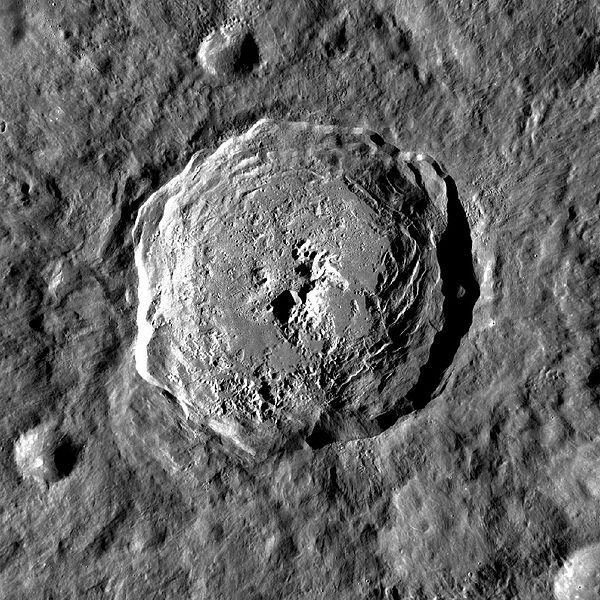The lunar geological timescale divides the history of Earth's Moon into five generally recognized periods: the Copernican, Eratosthenian, Imbrian, Nectarian, and Pre-Nectarian. The boundaries of this time scale are related to large impact events that have modified the lunar surface, changes in crater formation through time, and the size-frequency distribution of craters superposed on geological units. The absolute ages for these periods have been constrained by radiometric dating of samples obtained from the lunar surface. However, there is still much debate concerning the ages of certain key events, because correlating lunar regolith samples with geological units on the Moon is difficult, and most lunar radiometric ages have been highly affected by an intense history of bombardment.
Ancient rift valleys – rectangular structure (visible – topography – GRAIL gravity gradients) (October 1, 2014)
Ancient rift valleys – closeup (artist's concept)
The Copernican Period in the lunar geologic timescale runs from approximately 1.1 billion years ago to the present day. The base of the Copernican period is defined by impact craters that possess bright optically immature ray systems. The crater Copernicus is a prominent example of rayed crater, but it does not mark the base of the Copernican period.
The Copernican System on the near side of the Moon (Wilhelms, 1987)
The Copernican System on the far side of the Moon (Wilhelms, 1987)
Hayn
Jackson






